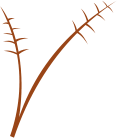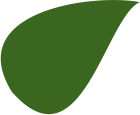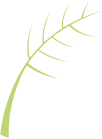HUNTON PARISH
COUNCIL
Hunton
North Yorkshire
Contact Us here
E: enquiries@huntonpc.org
Wildlife areas.
Purpose: to create wildlife friendly feeding and
breeding opportunities for a range of animals and
birds,
to protect trees, to create a wildlife corridor by
allowing natural cover to grow along the backsides
and in two
large areas of mown grass.
We are a group of three people who, having lived in
the village for over 30 years are keen not only to
keep the wildlife we have seen in Hunton over the
decades, but to recreate wild areas and so
increase habitats for a range of species of birds,
amphibians, insects, pollinators and
mammals, and to protect trees from strimming
damage.
We started two projects just before Covid
restrictions, with phase 1, an area by
Captain’s Bridge, scalped, turf-banked, planted with
homegrown primrose plugs and sown
with an annual mix, including yellow rattle. The
purpose was to reclaim a little-used
piece of close mown grass for wildlife and, with the
help of some children in the village;
we sowed indigenous annual and perennial
wildflower seed.
The first year was stunning, but we have had
difficulty maintaining this ‘display’
due to adverse weather, and reluctance to constantly
disturb and disrupt the habitat, which would also be
very labour intensive.
During this time we were given ten bird boxes, made
by a resident, Nicky. We put these up in trees on the
village amenity areas, near the beck and wildlife
areas and some were in use within weeks.
Our biggest expense in the first year was to create a
border of grey edging ‘bricks’ made from recycled car
tyres around the
orchard, a group of six very damaged apple trees,
some of which had lost 80% of their bark from
strimming. We replaced one
apple tree that had died. The challenge in this
orchard is poor, very thin dry soil, on top of stone
and concrete spoil left by the building development
of Greenacres. We have sown with lower growing
wildflower seed, and added cottage garden plants,
but also top dressed with manure to help the fruit
trees. These have been heavily pruned to let in air
and light and we do remove some apples to give
better fruit for scrumping.
Phase 2, on the south east side of the village amenity
area, was originally planned for more annual
wildflowers and we scalped, banked and sowed a
range of annuals. However, the deep shade from a
very large sycamore tree, as well as a small oak tree,
which was taken into this area to avoid strimmer
damage, meant we have adapted planting with
shade loving perennials and spring and autumn
bulbs, English bluebells under the trees, plus
cowslips and primroses.
We have also planted excess campion, daisy and
yellow flag iris along and in the beck margins to
create cover, and added what we hope will become a
bank of cowslips, primroses and Farndale species
daffodils, along the north east approach to the ford.
We have, through trial and error, come to the
conclusion that displays of annual wildflowers can
only be maintained by ‘restarting’ the areas annually;
as our ethos is to create largely undisturbed feeding
and breeding habitats for wildlife, we embrace the
challenge of creating floral interest for the human
population, whilst creating a rich and diverse natural
wildlife haven in the village centre.
Since creating these areas, a duck has nested below
Phase 2, and we’ve seen frogs and toads in both wild
areas. Bumblebees, butterflies and other pollinators
are commonly seen on the plants and blackbirds,
thrushes, dunnocks and wrens find live food in dry
times particularly. In the autumn, the seed heads
attract sparrows, tits, and finches. The extra cover
also brings Little Egrets, and the occasional heron.
Jan Wylie, Wendy Knight, Steve Knight.
View our slide show below, use arrow < > keys to transition
between images.









































































